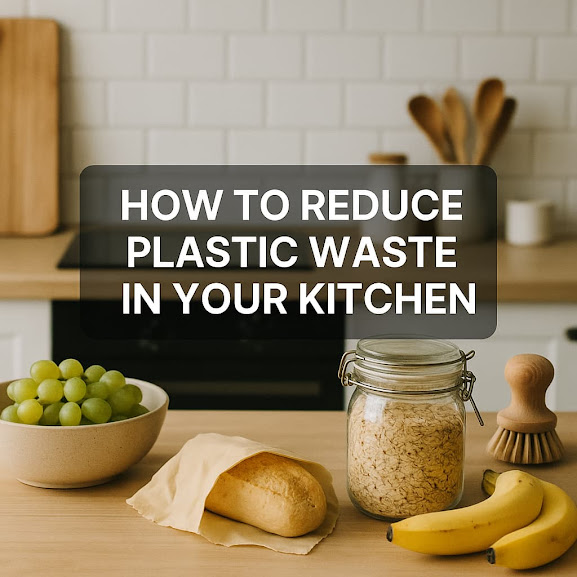The kitchen is often the heart of the home—and unfortunately, one of the biggest sources of plastic waste. From food packaging to disposable containers and plastic wrap, modern kitchens are overflowing with single-use plastics. But with a few mindful changes, you can significantly reduce your plastic footprint without sacrificing convenience or style. Here’s how to start a cleaner, greener, and more sustainable kitchen today.
1. Ditch Single-Use Plastic Bags
Start by replacing plastic zip bags with silicone food storage bags. These are reusable, freezer-friendly, and dishwasher-safe. Also, bring reusable produce bags when shopping—made of cotton or mesh, they hold fruits, veggies, and even grains securely.
Example: A family of four can save over 2,000 plastic bags per year by switching to reusable alternatives.
2. Say Goodbye to Plastic Wrap
Plastic wrap is notoriously difficult to recycle. Instead, use beeswax wraps, which mold to bowls and sandwiches with the warmth of your hands. For covering leftovers, opt for silicone stretch lids or simply place a plate over a bowl.
3. Buy in Bulk and Store Sustainably
Buying dry goods like rice, oats, and legumes in bulk reduces packaging waste. Store these in glass jars or stainless-steel containers to keep food fresh and visible—reducing food waste too.
4. Choose Products with Minimal or No Plastic Packaging
Be intentional at the grocery store. Choose items packaged in cardboard, glass, or metal. Many eco-friendly brands now offer compostable or fully recyclable packaging for staples like dish soap, snacks, and oils.
5. Switch to Reusable Kitchen Tools
Replace plastic utensils, sponges, and scrubbers with wood, bamboo, or metal alternatives. For example, compostable coconut scrubbers and wooden dish brushes are not only effective—they also break down naturally.
6. Make Your Own Kitchen Cleaners
Most store-bought cleaners come in plastic spray bottles. Mix your own using vinegar, baking soda, and essential oils—and store them in glass spray bottles. It’s cheaper, safer, and plastic-free.
7. Recycle Smartly and Reuse Creatively
Know your local recycling rules. Rinse plastics and sort properly to prevent contamination. Reuse food containers for organizing drawers or growing herbs. Turn an old jar into a spice shaker, smoothie glass, or candle holder.
Q&A Section
Q1. Are silicone products better than plastic?
A: Yes—food-grade silicone is durable, heat-resistant, and reusable, making it a safer and eco-friendly option for kitchen use.
Q2. Can beeswax wraps go in the fridge?
A: Absolutely! They’re perfect for wrapping cheese, fruits, or covering bowls in the fridge. Avoid raw meat and extreme heat.
Q3. What’s the best way to store bulk items?
A: Use airtight glass jars or stainless steel containers. Label them with chalk pens or reusable stickers for organization.
Q4. Are compostable kitchen tools durable?
A: Yes—tools like bamboo spoons or coconut scrubbers last for months with proper care. Just dry them out after each use.
Q5. How do I reduce plastic when buying meat or dairy?
A: Shop at local butchers or farmer’s markets where you can bring your own containers. Ask for paper wrapping instead of plastic.
Conclusion & Call to Action
Reducing plastic waste in your kitchen isn’t about perfection—it’s about progress. Small changes like switching to beeswax wraps, buying in bulk, or making DIY cleaners can collectively make a huge impact. Not only are these habits good for the environment, but they also foster mindfulness and long-term savings.
Start with one swap today—and take the first step toward a cleaner, plastic-free kitchen. Your planet (and pantry) will thank you.

